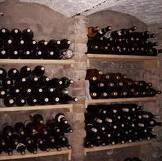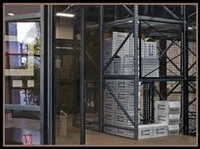 There is a sizable body of opinion that modern wine enthusiasts live in the moment. Therefore, the thinking goes, wines should be ready to drink upon release. It is no coincidence that so many wines today are soft, supple and ripe, made with barely a nod to the quaint notion that good wines improve with age.
There is a sizable body of opinion that modern wine enthusiasts live in the moment. Therefore, the thinking goes, wines should be ready to drink upon release. It is no coincidence that so many wines today are soft, supple and ripe, made with barely a nod to the quaint notion that good wines improve with age.
Many winemakers sincerely believe that’s what consumers want, and they aim to deliver. The tannins that act as a natural preservative are all but a faint memory in many red wines produced today. The firm acids that once gave white wines structure and longevity have been softened by what winemakers fondly describe as long hang time, which means, simply, that the grapes were allowed to grow riper and sweeter before picking.
You may have noticed that your so-called “dry” table wines such as Cabernet Sauvignon and Chardonnay seem to taste a little sweeter and fruitier than they once did. That’s due, at least in part, to the obsession with hang time. Though these wines sometimes come off as flabby, for the most part they are easy to drink and easy to like.
 So why, then, do any of us worry about how a wine might age, or bother with a wine cellar? I have noticed, for example, the fairly recent growth in the business of wine storage. Besides the cellar in my own home, I rent space at three different facilities that lease temperature-controlled wine lockers for wine collectors.
So why, then, do any of us worry about how a wine might age, or bother with a wine cellar? I have noticed, for example, the fairly recent growth in the business of wine storage. Besides the cellar in my own home, I rent space at three different facilities that lease temperature-controlled wine lockers for wine collectors.
All three are chock full, with some of the larger lockers packed with cases of wine stacked floor to ceiling. I was recently offered a few lockers that had been vacated at one of those facilities, but because I was traveling I couldn’t inspect the lockers and close the deal. By the time I returned a week or so later, the empty lockers had been rented and filled and I was out of luck.
The experience reminded me that some folks still treasure the beauty of a properly aged wine; so much so that they will spend a fair buck to cellar it under the most ideal conditions, then have the patience to wait until the wine has achieved maturity.
Still, the question is why? I answered my own question with a recent trip to forage in my small wine room in the basement of the house. I wasn’t sure what I wanted to serve with dinner that evening, but I knew I wanted to taste a red with some age.
After considering a number of options, I decided upon a Napa Valley Cabernet Sauvignon from the 2000 vintage, which, if memory serves, was not supposed to be so good for longevity. The wine was the regular Napa Valley bottling from Amizetta Vineyards. This is not a terribly expensive wine. In fact, an internet search turned up a few wine shops selling this very wine for $38 retail.
I pulled the cork and admired its condition. The bottom was black with sediment, and it was clear there had been no leakage, which is caused by excessive heat or wildly fluctuating temperatures.
I poured the wine and admired the color, which was brilliant to the rim. Red wines tend to lose color with age, but this 11-year-old Cab was still youthful, with no browning at the edge.
 On the first sip I observed that the tannins were firm, and the fruit seemed a bit subdued. Indeed, the wine remained tight and unexpressive until it was decanted, whereupon an amazing thing happened. The tannins sweetened up and softened, and aromas of blackberry and cassis filled the room.
On the first sip I observed that the tannins were firm, and the fruit seemed a bit subdued. Indeed, the wine remained tight and unexpressive until it was decanted, whereupon an amazing thing happened. The tannins sweetened up and softened, and aromas of blackberry and cassis filled the room.
My $38 Napa Valley Cab, at 11 years young, was positively stunning. After all the years, the patience, the care in maintaining temperature and humidity, this was my reward.
That, dear reader, is why we age our wines.
8
